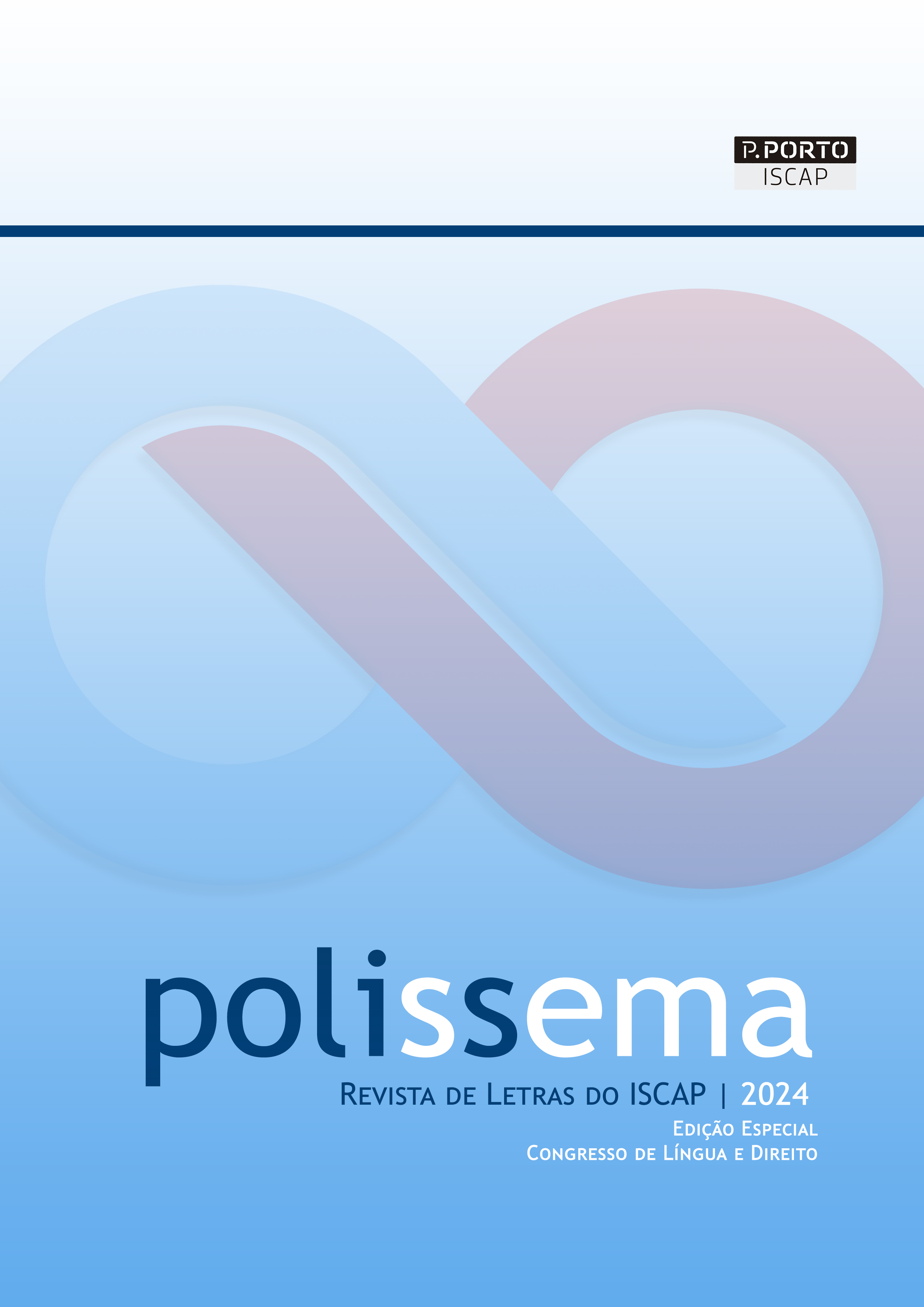FROM KANON TO QĀNŪN: A NEOLOGICAL TRAJECTORY BACKWARDS
DOI:
https://doi.org/10.34630/polissema.vi.5635Keywords:
Qānūn, legal terminology, Arab rights, legal translation, borrowingAbstract
It is a common misconception that Arab rights are essentially inspired by religious sources known as šarī'a. Similarly, it is prevalent that most legal norms are based on religious content, inferring that Islam regulates all spheres of life, be they ritual, transactional or criminal. Nonetheless, the classical Arabic language uses the name qānūn in its thesaurus, since the 10th century, borrowing it from the Greek kanôn (Κανών) as a reference to the norms, human and temporal, that the sovereigns and Doctors of Law enacted and applied.
In this study, we shall review this term, qānūn, to explore its origins and highlight the circumstances of its gradual integration into the classical and modern Arabic language. This term now appears as the unique equivalent denoting the positive legal field corresponding to the notions of law, norms and duties imposed by a given State. Such meanings seem to have been entrenched over the centuries and eventually referred to the current codes and laws governing Tunisia. However, far from being a technical word encompassing all laws and provisions, this term is sometimes brandished, for political purposes, by the Tunisian state to extol the conformity of its policy with the law.
References
Badawī‚ A. (1953). Fann aš-ši’r ma‘a al-tarjama al-'arabiyya al qadīma wa šurūh al-Fārābī wa, Le Caire.
Bellefonds (de), Y. L. (2005). Encyclopédie de l’islam 2, IV, 580-584.
Bocthor, E. (1882). Dictionnaire français-arabe (2ème édition), revu et augmenté par A. Caussin de Perceval. éd. F. Didot père et Cie.
Chehata, C. (1965). Logique juridique et droit musulman, Studia Islamica, 23, 5-25, Brill.
Chraïbi, S. (2018). Fondements et diffusion d’une langue arabe des droits humains : Le travail pionnier de R.R. Al-Tahtâwî (Egypte, XIXème s.). La Clé des Langues, ENS de Lyon. http://cle.ens-lyon.fr/arabe/litterature/classique-et-nahda/fondements-et-diffusion-d-une-langue-arabe-des-droits-humains-r-r-al-tahtawi-egypte-xixeme-s.
Djaït, H. (2006). La vie de Muḥammad. Fayard.
Dozy R. (1882). Suppléments aux dictionnaires arabes. Brill.
Dupret, B. (2014). La Charia aujourd’hui, Usages de la référence au droit islamique. La Découverte.
El-Shakankiri M. (1981). Loi divine, Loi humaine et droit dans l'histoire juridique de l'Islam. Revue internationale de droit comparé, Année, 33(3), 767-786.
Fayyūmī (al-). (1987). Al-Miṣbāḥ al-munīr. Maktabat Lubnān.
Frank, M. Ad. (1845). Dictionnaire des sciences philosophiques, 2ème édition, par une société de professeurs et de savants, sous la direction de M. Ad. Franck. Hachette.
Ğawhrī (al-). Tağ al-luġa wa ṣihāh al-‘Arabiyya, vol 6, Dar al-‘ilm li-l- Malāyīn.
Jeffrey, A. (1938). Foreign Vocabulary of the Qur’ān. Oriental Institute.
Kazimirski de Biberstein, A. (1869). Dictionnaire arabe – français. Maisonneuve.
Khalfallah, N. (2024). Comment dire la peine capitale en arabe ? D’une rive à l’autre, les mêmes mots de droit, sous dir. N. Khalfallah, éd. Champion Honoré.
Pihan A. (1897). Dictionnaire étymologique des mots de la langue française dérivés de l'Arabe, du Persan ou du Turc, avec leurs analogues grecs, latins, espagnols, portugais et italiens.
Reig, D. (2004). Le Larousse, arabe- français. Éd. Larousse.
Schacht, J. (1999), Introduction au droit musulman. Maisonneuve et Larose.
Wehr, H. & Cowan, M. (1966). Arabic-English of Modern Written Arabic. Librarie du Liban.
Wensinck, A. J. (1936). Concordance et Indices de la Tradition Musulmane. E.J, Brill.
Wood, L. (2016). Islamic Legal Revival: Reception of European Law and Transformations in Islamic Legal Thought in Egypt, 1875-1952. Oxford University Press.
Zamaḫšarī (az-), M. (1992). Asās al-Balāġa. Dār Ṣādir.
Downloads
Published
How to Cite
Issue
Section
License
Copyright (c) 2024 POLISSEMA – ISCAP Journal of Letters

This work is licensed under a Creative Commons Attribution-NonCommercial-NoDerivatives 4.0 International License.


